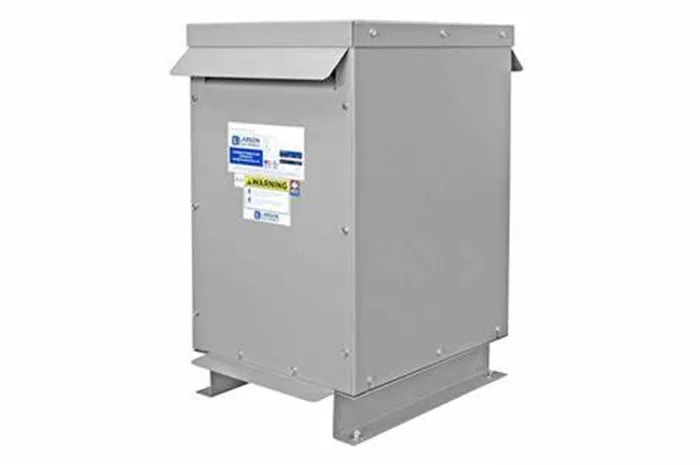Transformers are essential components in electrical systems, used to step up or step down voltage levels for efficient power distribution. Choosing the right transformer size, measured in kilovolt-amperes (kVA), is crucial for ensuring system reliability, efficiency, and safety. This article provides a detailed guide on determining the appropriate kVA rating for your transformer based on load requirements, application type, and other key factors.
Understanding Transformer kVA Rating
he kVA rating of a transformer indicates its power-handling capacity. Unlike kW (kilowatts), which measures real power, kVA represents apparent power, accounting for both real and reactive power in AC systems. Selecting the correct kVA ensures the transformer can handle the load without overheating or inefficiency.
Factors influencing kVA selection:
Load type: Resistive loads (heaters, incandescent lamps) and inductive loads (motors, transformers) affect power factor differently. Inductive loads require higher kVA due to reactive power.
Future expansion: If additional equipment may be added later, choosing a slightly larger transformer prevents frequent upgrades.
Ambient temperature: High temperatures reduce transformer efficiency, sometimes necessitating a higher kVA rating for cooling.
Voltage requirements: Step-up or step-down applications influence the transformer’s current-carrying capacity, impacting kVA selection.
Calculating Required kVA for Your Application
To determine the appropriate transformer size, you must calculate the total load demand. This involves assessing all connected electrical devices and their power requirements.
Step 1: Identify All Connected Loads
List every piece of equipment that will be powered by the transformer. Include motors, lighting systems, HVAC units, and other machinery. For each device, note its voltage, current, and power factor (if available).
Step 2: Calculate Total Power Consumption
Convert individual loads into kVA. For single-phase systems, use:
kVA = (Voltage × Current × Power Factor) / 1000
For three-phase systems, the formula is:
kVA = (Voltage × Current × Power Factor × √3) / 1000
If power factor is unknown, a typical estimate of 0.8 can be used for inductive loads.
Step 3: Account for Diversity and Demand Factor
Not all equipment operates simultaneously. Apply a diversity factor (typically 0.7 to 0.9) to avoid oversizing. For example, if total connected load is 100 kVA with a diversity factor of 0.8, the required kVA is 80.
Step 4: Add a Safety Margin
To accommodate unexpected load increases, add a 10-20% safety margin. If the calculated load is 80 kVA, a 90-100 kVA transformer may be suitable.
Common Applications and Recommended kVA Sizes
Different applications require varying transformer sizes. Below are some typical scenarios:
Residential Use
Homes with standard appliances (refrigerators, air conditioners, lighting) usually require 5-25 kVA transformers. Larger homes with electric heating or EV chargers may need 50 kVA or more.
Commercial Buildings
Offices, retail spaces, and small businesses typically use 75-300 kVA transformers. High-power equipment like elevators and centralized HVAC systems increase demand.
Industrial Facilities
Factories with heavy machinery, motors, and production lines often require 500 kVA to 2500 kVA transformers. Variable frequency drives (VFDs) and large compressors significantly impact sizing.
Renewable Energy Systems
Solar farms and wind turbines need transformers to interface with the grid. Sizing depends on inverter output, with common ratings ranging from 500 kVA to 5 MVA.
Special Considerations for Transformer Selection
Beyond basic calculations, several technical and environmental factors influence the ideal transformer size.
Harmonics and Non-Linear Loads
Modern electronics (computers, LED drivers, VFDs) produce harmonic distortions, increasing apparent power demand. A K-rated or oversized transformer may be necessary.
Inrush Current
Motors and transformers draw high inrush currents during startup. A larger kVA rating ensures the transformer can handle these temporary surges without tripping.
Altitude and Cooling
At higher altitudes, air density decreases, reducing cooling efficiency. Transformers may need derating or increased kVA to compensate.
Transformer Efficiency and Overloading
Operating a transformer near its rated capacity maximizes efficiency but leaves no room for load fluctuations. Conversely, significantly oversized transformers operate inefficiently at light loads.
Optimal Loading Range
Most transformers perform best at 50-75% load. Below 30%, efficiency drops due to fixed core losses. Above 90%, excessive heat shortens lifespan.
Temporary Overloading
Transformers can handle short-term overloads (110-150% of rated kVA) without damage, provided cooling is adequate. Continuous overloading leads to insulation degradation and failure.
Consulting Manufacturer Specifications
While calculations provide a baseline, manufacturers offer detailed sizing guides based on real-world testing. Always review technical datasheets and consult with suppliers before finalizing a purchase.
Custom vs. Standard Transformers
For unique applications (mining, marine, extreme climates), custom-designed transformers may be necessary. Standard units are cost-effective for typical scenarios.
Efficiency Standards
Look for transformers compliant with DOE (Department of Energy) or IEC efficiency standards. Higher-efficiency models reduce long-term energy costs despite higher upfront prices.
Conclusion
Selecting the right kVA transformer involves careful analysis of load requirements, environmental conditions, and future expansion plans. By accurately calculating power demand, considering application-specific factors, and consulting manufacturer guidelines, you can ensure optimal performance and longevity. Always prioritize safety margins and efficiency to avoid costly downtime or replacements.
For complex installations, working with an experienced electrical engineer or transformer specialist is recommended to tailor the solution to your exact needs.
Related Topics:

